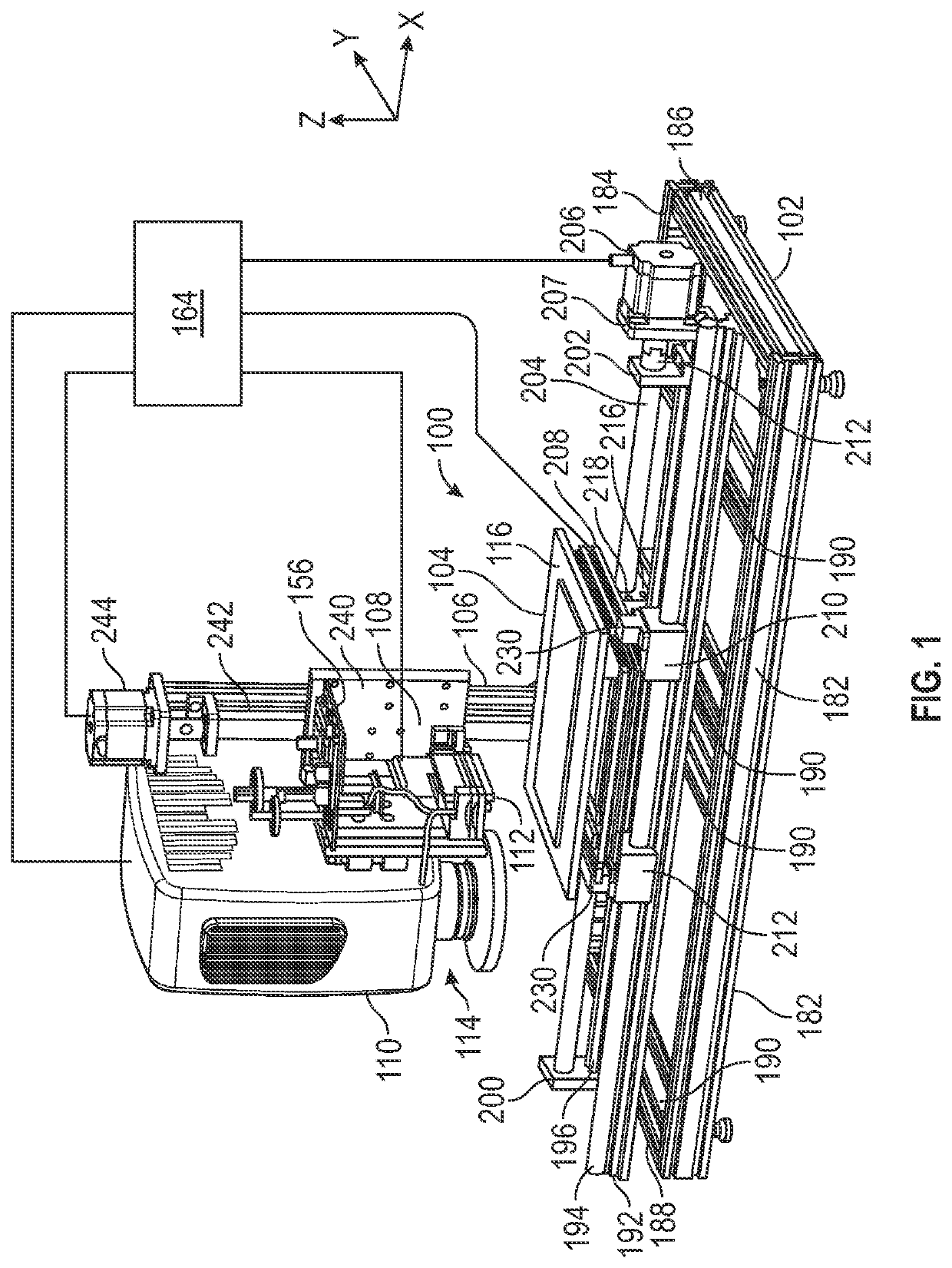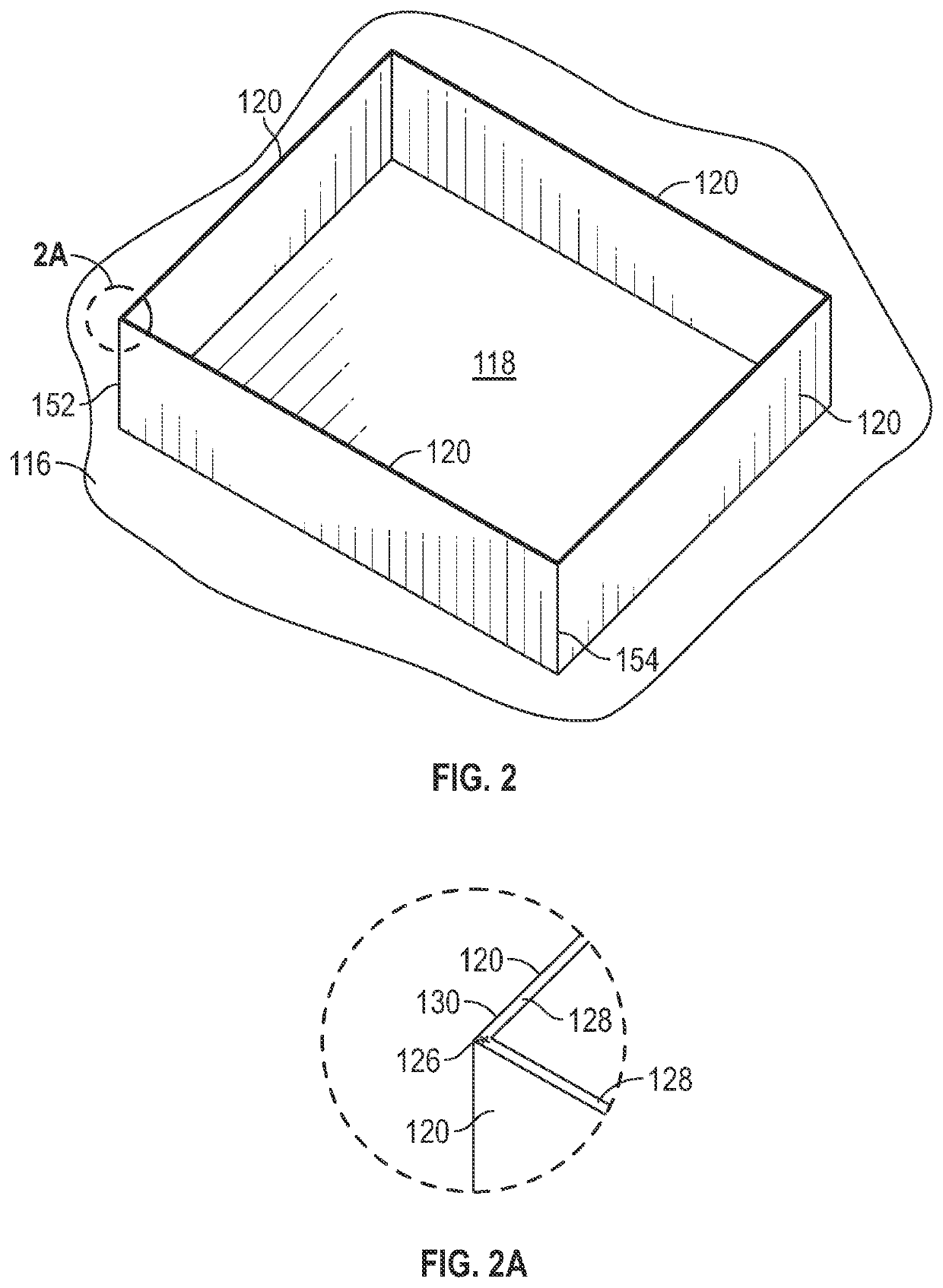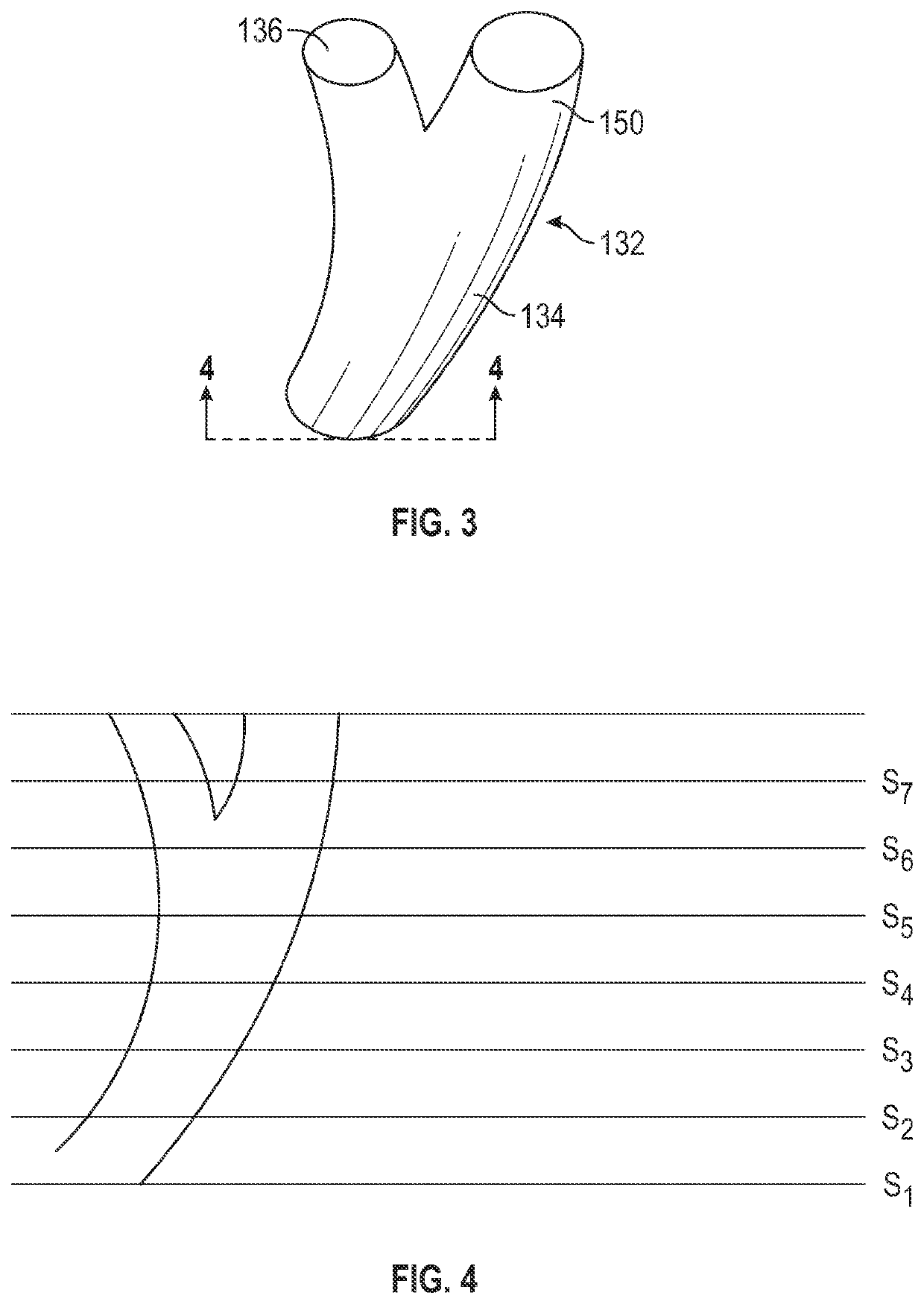Hybrid printing platform for 3D bioprinting of live organs
a 3d printing and live organ technology, applied in the direction of prosthesis, manufacturing tools, layer means, etc., can solve the problems of not meeting the small feature resolution requirements of certain resulting structures created by 3d printing using these technologies, and none of these existing solutions can meet both requirements at the same tim
- Summary
- Abstract
- Description
- Claims
- Application Information
AI Technical Summary
Benefits of technology
Problems solved by technology
Method used
Image
Examples
Embodiment Construction
[0029]Referring initially to FIG. 1, an inkjet type printer 112 configured to dispense an electromagnetic energy curable material, here a bioink containing living or bioactive cells and a material curable by directing electromagnetic energy therein, onto carrier 124 mounted on a moveable stage 104, and to cure that material, is shown. Here, the dispense and cure station 100 generally includes a base 102, a stage 104 moveable in the X-Y plane of Figure X, an upright support 106, a dispense station 108 and curing station 110 operatively connected to the upright support 106. In this configuration, the dispense station 108 and the cure station 100 are controllably moveably coupled to the upright support 106 to move in the Z direction of FIG. 1, but are generally fixed against movement in the X and Y direction by their connection to the upright support 106. In the construct of Figure X, the dispense station 108 is configured as an inkjet type printer 112 capable of dispensing droplets of...
PUM
| Property | Measurement | Unit |
|---|---|---|
| size | aaaaa | aaaaa |
| degrees on rotation | aaaaa | aaaaa |
| droplet size | aaaaa | aaaaa |
Abstract
Description
Claims
Application Information
 Login to View More
Login to View More - R&D
- Intellectual Property
- Life Sciences
- Materials
- Tech Scout
- Unparalleled Data Quality
- Higher Quality Content
- 60% Fewer Hallucinations
Browse by: Latest US Patents, China's latest patents, Technical Efficacy Thesaurus, Application Domain, Technology Topic, Popular Technical Reports.
© 2025 PatSnap. All rights reserved.Legal|Privacy policy|Modern Slavery Act Transparency Statement|Sitemap|About US| Contact US: help@patsnap.com



